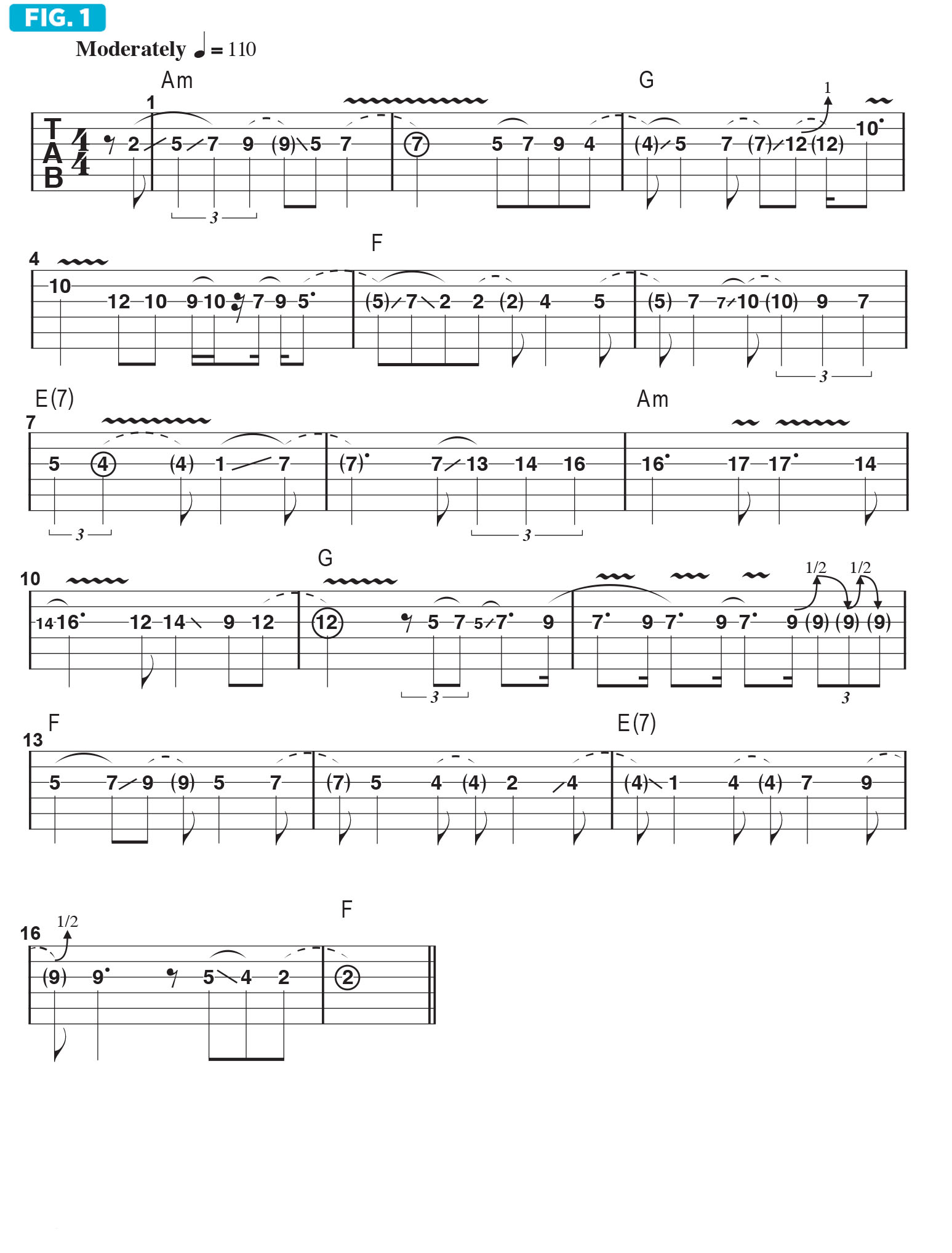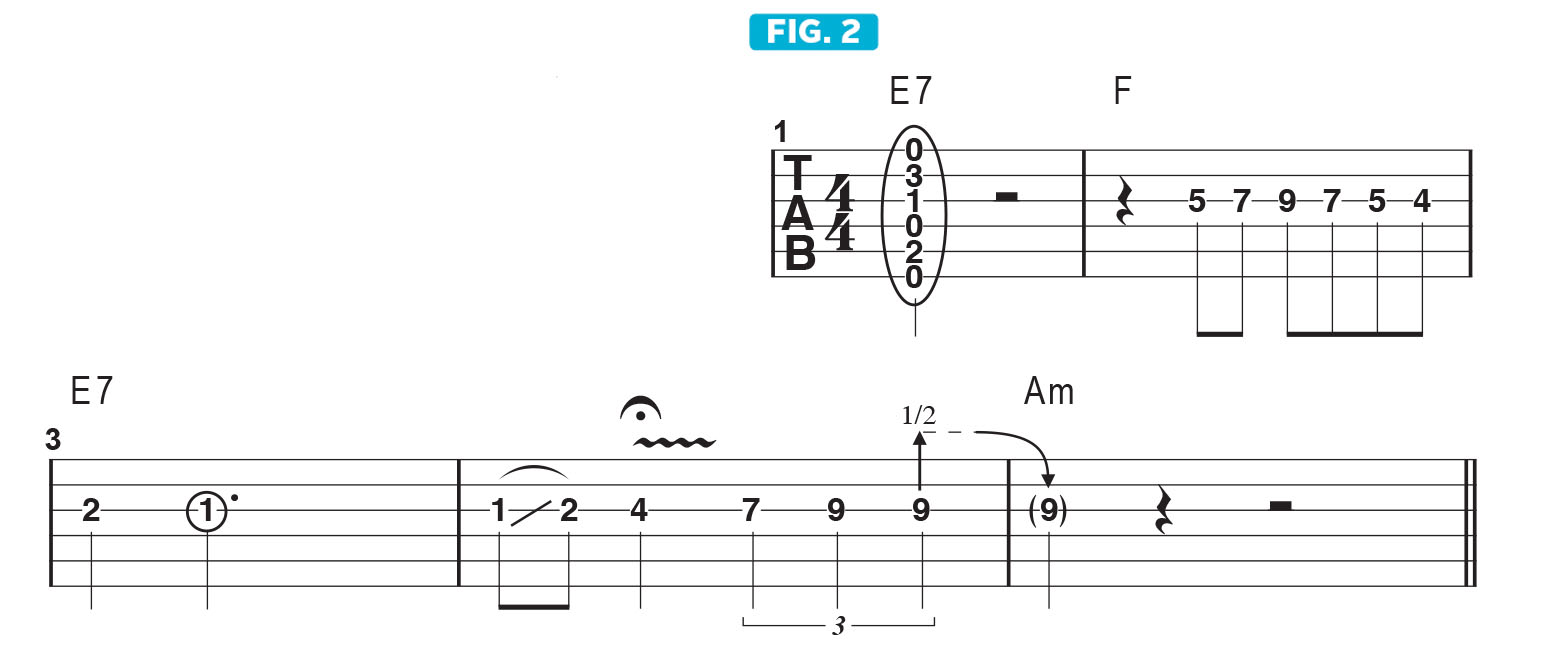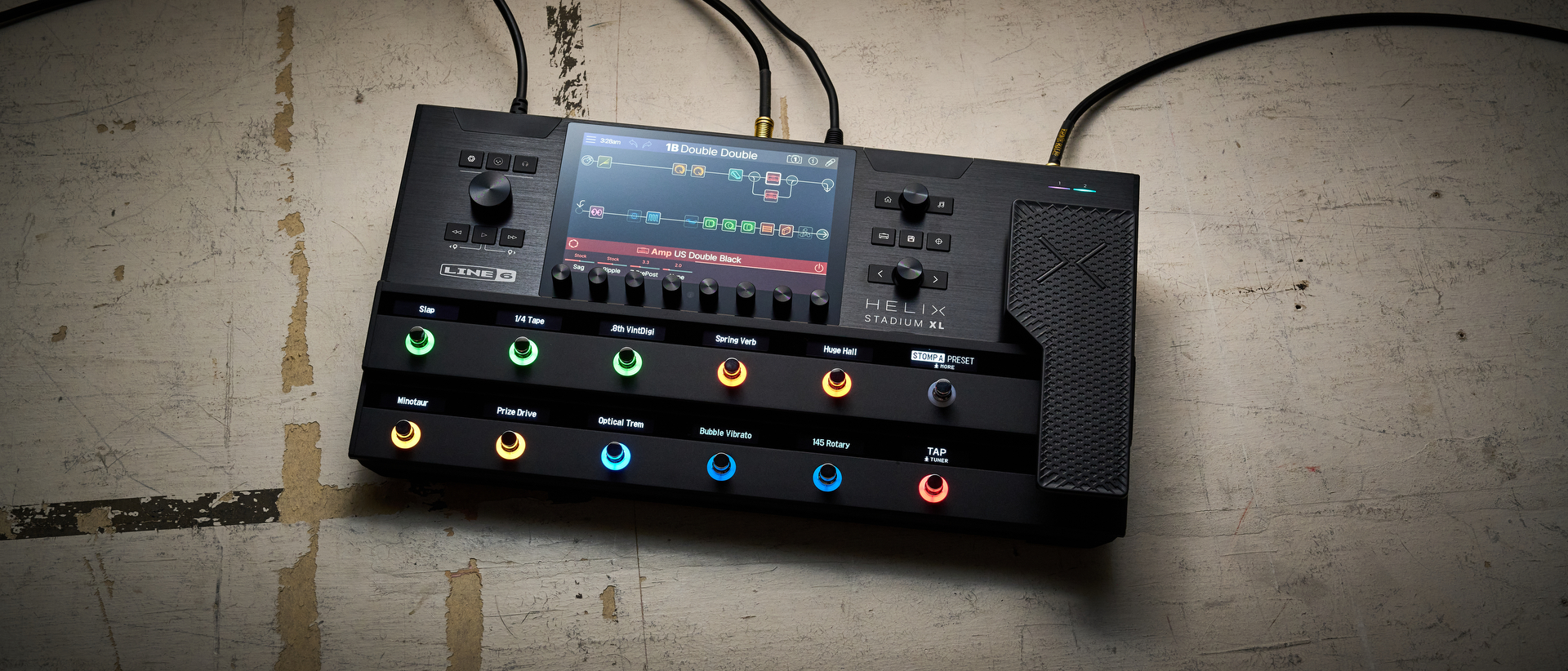Andy Timmons shows you how to target chord tones in melodic improvisation
Don't just play scalar runs when soloing – tell a story by accentuating the chords underneath with your note choice
Last time, I discussed my approach to melody and melodic awareness, as applied to improvised solos played on a single string. Whether you’re playing over a complex chord progression or a single chord, the notes you choose to emphasize in a solo will serve to “tell the story.”
We began by looking at the simple A minor pentatonic scale, which is spelled A, C, D, E, G, and intervallically, 1 (root), b3 (flatted 3rd), 4, 5, b7 (flatted 7th). We then expanded this five-note entity to the seven-note A natural minor scale, which consists of the notes A, B, C, D, E, F, G, intervallically, 1 (root), 2, b3 (flatted 3rd), 4, 5, b6 (flatted 6th), b7 (flatted 7th).
I then demonstrated how to use the notes of A natural minor over a static Am9 chord. Now, we’ll use the single-string approach to play over a chord progression.
Figure 1 illustrates a 16-bar improvised solo that I played over a repeating Am - G - F - E7 progression, with each chord played for two bars.
Maintaining the approach of playing horizontally up and down the G string, the improvised lines are guided by the diatonic notes of A natural minor, as well as the chord progression itself. Specifically, when playing over Am, I place emphasis on the chord tones of Am – the 1, 3 and 5, and also b7 – as these notes serve to describe, harmonically, the structure of the chord.
When moving to G, the notes in the line that I emphasized are the chord tones of G: G, B and D. Of paramount importance though, is that the line itself, in “global” terms, has to sound like music, and not an exercise in simply landing on chord tones.
In every solo I play, I always strive to tell a cohesive musical story that will hold the listener’s interest from beginning to end. My awareness of each of the chords in the progression and its associated chord tones serves as a tool in the development of the improvised melodic line and helps to guide where it might go.
All the latest guitar news, interviews, lessons, reviews, deals and more, direct to your inbox!
But there’s so much more to it than just following that theoretical method. And therein lies the eternal challenge – how to make the most of each note in your solo based on where it falls within a given bar and across the chord sequence.
Getting back to Figure 1, two bars of G are followed by two bars of F (bars 5 and 6, and 13 and 14), with its associated chord tones F, A, and C, and the progression ends with E(7). We’re in the key of A minor, and the E note functions as the root of the V (five) chord.
Normally, the diatonic V chord in the key of A natural minor would be Em (E, G, B). Here, however, I add a twist by playing the V chord as a dominant 7th, E7 (E, G#, B, D), so there is now a chord tone that is outside of A natural minor and instead derived from the parallel A harmonic minor scale (A, B, C, D, E, F, G#).
Figure 2 depicts the E7 chord, followed by an example of how one might move from a line played over F, which remains diatonic to A natural minor, to one played over E7.
Touching on the G# note over the E7 chord like this offers a colorful and much welcomed deviation from the sameness of A natural minor while also strengthening the line’s connection to the progression.
Andy Timmons is a world-renowned guitarist known for his work with the Andy Timmons Band, as well as Danger Danger and Simon Phillips.



